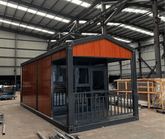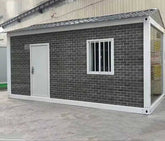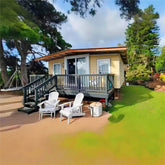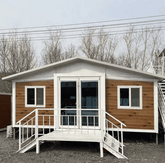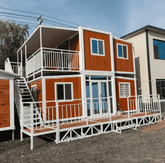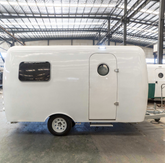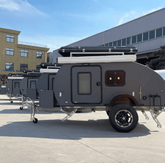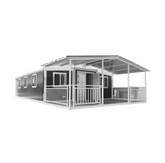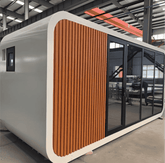The Pros and Cons of Tiny House Living
If you are looking for the pros and cons of a tiny home then you’re at a right place. We will discuss about the pros and cons of living in a Tiny Home. So let’s start. Basically, first we have to know that what is the actual meaning of a tiny home? Tiny home is a small house that are usually between 100 and 400 square feet. They are becoming more popular as people look for simpler, more affordable, and more eco-friendly ways to live. Some tiny homes are built on foundations like regular houses, while others are built on wheels and can be moved around. So, there are many different types of Tiny Homes. It depends which one you want or which one is more suitable for you according to your location or place. If you see, living in a tiny home is very different from living in a traditional house, and it comes with both benefits and challenges.
In this article, we’ll look at the main pros and cons of living in a tiny home:
Pros of Living in a Tiny Home
You Save a Lot of Money
One of the biggest reasons people choose tiny homes is to save money. Majority people want to save money due to various reasons. Tiny homes usually cost much less to build or buy than regular houses. They are so cheap compared to residential houses. You also spend less money on monthly bills, such as electricity, heating, cooling, and water.
Because tiny homes are smaller, they need less energy to keep warm in winter and cool in summer. Many tiny homeowners don’t need a big loan, and some people even pay for their tiny home in full without borrowing money. This can help reduce stress and give more freedom in life.
Simple and Less Stressful Living
When you live in a tiny home, you don’t have much space for extra stuff. This means you have to choose what you really need and get rid of things you don’t use. Many people find this simple lifestyle helps them feel calmer and happier.
Less space also means less cleaning and less time spent on home maintenance. This gives you more time to focus on things you enjoy, like hobbies, time with family, or outdoor activities.
Better for the Environment
Tiny homes use fewer materials to build, and they take up less space on the land. Because they use less energy and water, they are more eco-friendly than regular homes.
Many people who live in tiny homes also use solar panels, composting toilets, and rainwater collection systems. This helps lower their impact on the planet even more. If you care about the environment, a tiny home can be a good choice.
You Can Move It (Sometimes)
Some tiny homes are built on wheels, like a trailer. These types of homes can be moved from one place to another. This is great for people who like to travel or want the freedom to change locations.
For example, if you find a new job in another city or just want to live closer to nature, you can take your home with you. You don’t have to sell your house and buy a new one—you just move your tiny home.
Cons of Living in a Tiny Home
Not Much Space
The biggest downside is the small space. If you live alone, it might be fine. But if you have a partner, children, or pets, it can feel crowded.
There may not be enough room for all your clothes, books, or other things. You may also miss having a big kitchen, extra rooms, or a big bathroom. For some people, the small space is too limiting.
Final Thoughts
Tiny homes are a smart choice for people who want to live simply, save money, and reduce their impact on the environment. They offer a different way of life that many people find peaceful and rewarding.
However, they are not for everyone. If you need more space, have a big family, or live in a place with strict housing rules, a tiny home might not work for you.
Before choosing to live in a tiny home, it’s important to think carefully about your lifestyle, your needs, and where you want to live. If it fits your situation, a tiny home can be a great way to enjoy a simpler, more affordable, and more mindful life.



